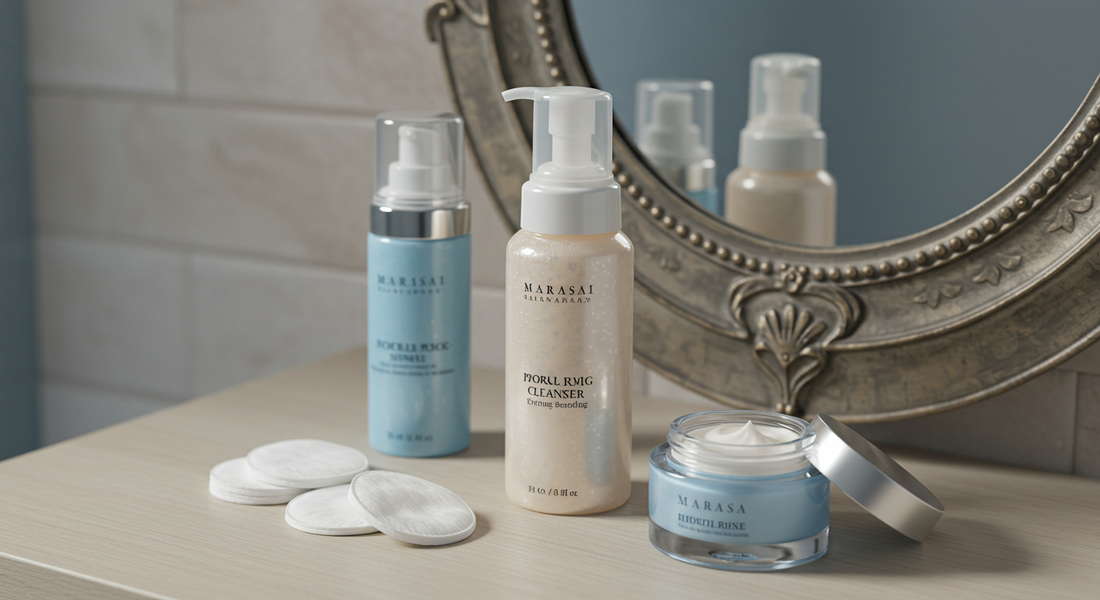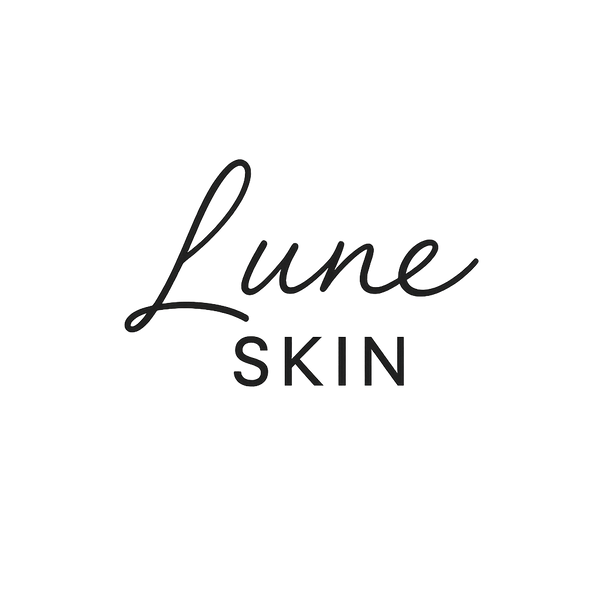
How to Build a Skincare Routine That Works for Your Skin Type
Share
Introduction
Every person’s skin is unique, and what works beautifully for one may cause irritation or imbalance in another. One of the keys to healthier, more radiant skin is tailoring your skincare routine to your specific skin type. A well‑designed routine helps protect the skin barrier, address your skin’s main concerns (whether dryness, oiliness, sensitivity, or combinations thereof), and deliver visible, long‑term results. In this guide, you will learn how to identify your skin type, understand what each type needs, and build both morning and night routines that support skin health. At Lune Skin, we believe effective skincare isn’t about having the most expensive products—it’s about the right steps, the right timing, and consistency.
1. Identify Your Skin Type
Before selecting products, you need clarity on what your skin is like. Often people misdiagnose or try to treat issues caused by the wrong product for their skin type.
- Normal Skin: Balanced, neither too oily nor too dry. Few visible pores, minimal sensitivity. Appears smooth, even, relatively blemish‑free.
- Dry Skin: Feels tight, especially after cleansing. Prone to flaking, rough texture, dullness. May show fine lines faster.
- Oily Skin: Shine, especially in the T‑zone (forehead, nose, chin). Visible pores, frequent breakouts. Makeup may slide off or look “slippery.”
- Combination Skin: Some parts are oily (often T‑zone), while other areas (cheeks) are dry or normal. Needs balancing.
- Sensitive Skin: Easily irritated. Redness, stinging, or burning may occur with certain cleansers, active ingredients, or environmental stressors.
You can use simple tests: cleanse your face, wait 30 minutes, observe whether your skin feels tight, shiny, or balanced. Or use blotting sheets to see where oil is produced. These help you bracket into one of the above types.
2. General Principles for All Skin Types
Regardless of type, some principles hold true for everybody:
- Use sunscreen daily, broad‑spectrum, SPF 30 or higher. UV damage undermines all skincare efforts.
- Cleanse gently twice a day (morning + night) or once at night if your skin doesn’t get oily; harsh cleansers damage the barrier.
- Use non‑comedogenic, fragrance‑free or low‑irritant products if sensitivity is or could be an issue.
- Introduce active ingredients (e.g. acids, retinoids) gradually, monitor skin response.
- Hydration is not just topical; drink water, avoid very hot showers, maintain humidity.
3. Routine by Skin Type
Here are skin‑type‑specific routines: what kind of cleanser, moisturizer, and extras work best. You can adjust based on climate, age, concerns (e.g. acne, pigmentation, aging).
Dry Skin
-
Morning
-
Gentle, cream‑ or milk‑based cleanser to avoid stripping natural oils.
-
Hydrating toner or essence with humectants like glycerin, hyaluronic acid.
-
Lightweight serum for extra moisture or barrier support (e.g. ceramides).
-
Rich, emollient moisturizer; choose one with occlusives (e.g. oils, but non‑comedogenic) to seal in moisture.
-
Sunscreen is a must.
-
-
Evening
Same cleanser (or if you wear heavy makeup, a double cleanse: oil‑ or balm‑based followed by creamy cleanser).
Use more nourishing serums (vitamin E, peptides).
Consider a richer night cream or sleeping mask occasionally.
Gentle exfoliation once a week (chemical exfoliant preferred, e.g. mild AHA) to remove flaky skin. Over‑exfoliation will worsen dryness.
Oily / Acne‑Prone Skin
-
Morning
-
Gel or foaming cleanser that helps remove excess oil without over‑drying.
-
Toner, optionally with salicylic acid or niacinamide, to balance oil.
-
Lightweight, water‑based serum (niacinamide helps reduce sebum).
-
Oil‑free, non‑comedogenic moisturizer—yes, oily skin still needs moisture.
-
Sunscreen, preferably gel or fluid formulation, non‑greasy.
-
-
Evening
If wearing makeup / sunscreen, consider oil‑ or balm‑based cleanser first (“double cleanse”) then gel cleanser.
Treatment actives: salicylic acid, benzoyl peroxide, or retinoid (if tolerated) targeted for acne or oil control.
Use lightweight moisturizer to help restore barrier, prevent rebound oil production.
Exfoliate 1‑2 times a week with BHA; avoid abrasive physical scrubs.
Combination Skin
- Focus on balancing: treat different zones appropriately.
- Choose a mild to moderate cleanser that is not too stripping.
- Use moisturizers variably: lighter formulas (gel or lotion) in oily zones; richer cream in dry areas like cheeks.
- Serums or spot‑treatments can be used in zones with specific concerns (e.g. breakout‑prone T‑zone).
- Sunscreen across the whole face, non‑greasy or hybrid textures (fluid, gel cream) that don’t feel heavy.
- Exfoliate the oily zones more often (e.g. 1‑2×/week), dry zones more gently or less often.
Sensitive Skin
- Gentle cleanser, fragrance‑free, minimal lather; ideally with soothing base.
- Patch test new products before applying to full face.
- Avoid high concentrations of acids, essential oils, or strong retinoids initially.
- Choose calming serums (aloe, centella, chamomile, madecassoside) and barrier‑restoring ingredients (ceramides, niacinamide).
- Moisturizer that supports barrier; occlusives can help but be cautious with heavy oils.
- Exfoliation minimal—maybe once every two weeks or less, and only gentle chemical exfoliants.
- Sun protection with physical or gentle chemical sunscreen; avoid strong fragrance.
4. Order of Application & Layering
The order in which you apply skincare products matters so that actives can penetrate and deliver effects without being blocked. General guideline:
-
Cleanser
-
Toner / Essence (lightweight hydrating layers)
-
Treatment Serums / Spot Treatments / Actives (vitamin C, acids, retinoids etc.)
-
Moisturizer
-
Sunscreen in the morning
At night you may omit sunscreen and have additional treatment steps. If using potent active ingredients, give time for skin to acclimate.
5. One Routine, Different Seasons & Age
Skin type isn’t static. Climate (humidity, cold, heat), age, hormonal changes alter how your skin behaves.
- In winter or dry seasons, even oily skin might need richer moisturizer.
- In summer, lean on lighter textures, more frequent cleansing (if you sweat more) but try not to over‑strip.
- As skin ages, barrier function tends to weaken—so bring in more repair / hydration (peptides, ceramides) and gentle exfoliation.
6. Common Mistakes & How to Avoid Them
- Using harsh cleansers or over‑washing, which destroys protective skin oils.
- Skipping moisturizer because skin feels oily (this often backfires: skin compensates by producing more oil).
- Overusing actives (acids, retinoids) too soon—causes irritation, barrier damage.
- Ignoring sunscreen. Even the best routine can’t protect against UV damage if you skip SPF.
- Changing routines too frequently—results take time. Give products at least several weeks to see effect.
Conclusion
A skincare routine that works is less about the number of steps and more about choosing the right steps for your skin. Identify your skin type, understand its needs, build a routine with consistency, and adjust with seasons or changes. At Lune Skin, we emphasize gentle, evidence‑based formulations and tailored care above all. When your routine supports (rather than stresses) the skin, beauty becomes sustainable.
